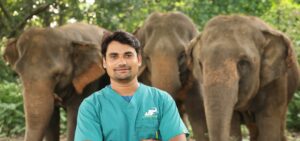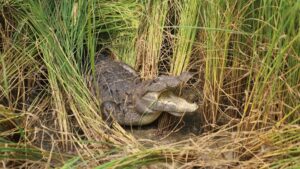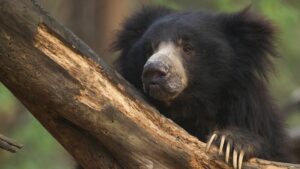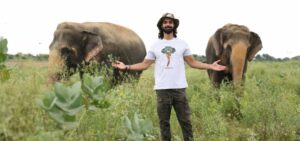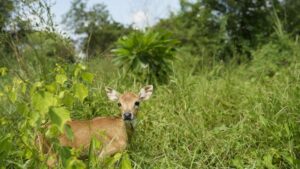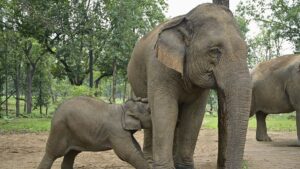For decades, sloth bears across India were subjected to one of the cruellest traditions imaginable, the practice of ‘dancing’ bears. These bears were torn apart from their mothers as cubs, their canines were pulled out, and their muzzles were viciously pierced with piping hot iron rods for a rope to pass through, reducing their lives to one of agony, neglect, and terror. Such bears frequently bear visible scars from years of enslavement, even after being rescued. When they arrived at Wildlife SOS centres, these bears gradually began to understand what safety, care, and dignity meant. Having rescued hundreds of such bears to provide them with lifelong sanctuary also helped our team to learn a few significant lessons. We adapted our care programme to meet the evolving needs of many saved bears that have now entered their senior years. Under our dedicated protection, elderly bears are living at an age unthinkable in the wild. Their stories, of trauma, recovery, and resilience, illustrate why specialised geriatric care is not just a service, but an act of justice.
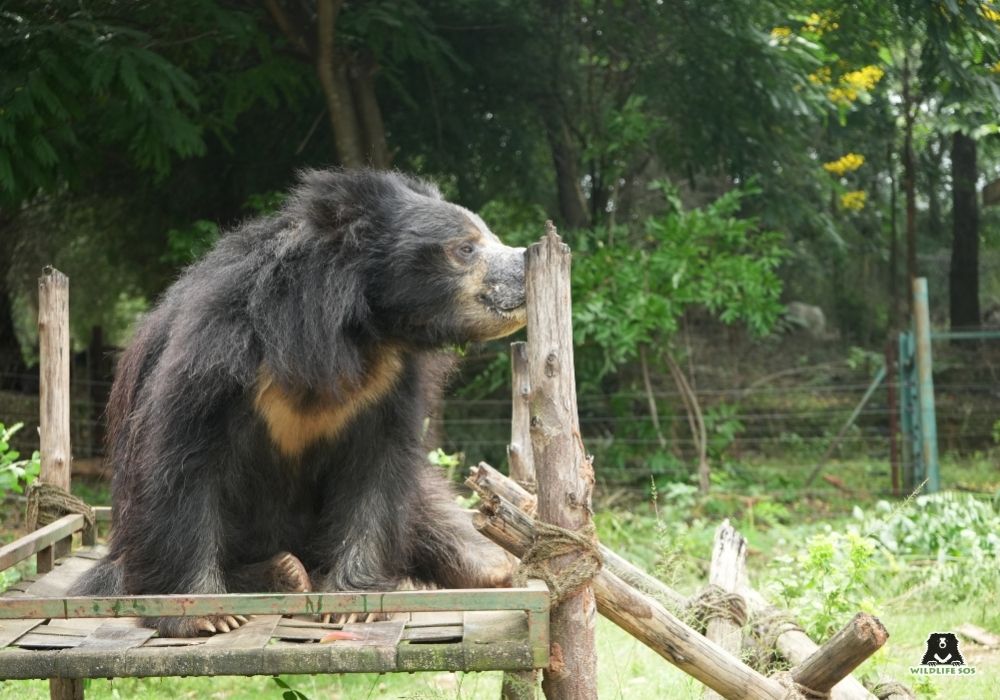
In their natural forested homes, the average lifespan of sloth bears is between 15 and 20 years. At Wildlife SOS’s four centres, Agra Bear Rescue Facility (ABRF), Bannerughatta Bear Rescue Centre (BBRC), Van Vihar Bear Rescue Facility (VVBRF) and West Bengal Bear Rescue Centre (WBBRC), a carefully planned diet, expert medical care, and compassionate daily routines have extended their age dramatically. Under these conditions, sloth bears can live up to 30 years, and some far beyond. One such bear was Gulabo, who survived the brutality of captivity. For over 20 years, she was forced to “dance” on her frail, ageing limbs for human entertainment. Poached from the wild as a cub, Gulabo was robbed of her freedom and her chance to ever survive in the wild again. Emaciated, partially blind, and traumatised, she arrived at VVBRF as a shadow of herself. Yet, with patient veterinary care and tailored nutrition, Gulabo lived to an astounding 37 years, a testament to how attentive care can rewrite a life’s trajectory.
Understanding Ageing in Sloth Bears
At Wildlife SOS, sloth bears above 15 years are generally classified as geriatric, though each bear’s health status is assessed individually. Like elderly humans, older bears experience slower feeding, reduced mobility, declining body condition, and age-related ailments such as osteoarthritis, vision or hearing loss, excessive claw curvature, and dental pathologies. Each of the geriatric bears under our care receives personalised observation, especially for worsening gait or mobility issues, to ensure early intervention. Some bears lose their sight entirely. For an animal that already has poor auditory senses, losing the ability to see can be devastating. To keep them safe all day long, caregivers meticulously clear their fields of any obstacles that could hinder their movement and use sound cues to guide them to their dens for meals. They also ensure that nothing within the enclosure is moved or rearranged, as these bears rely heavily on memory maps and familiarity to navigate their space safely. Even small changes in orientation can cause confusion or distress, so consistency becomes a quiet form of comfort for them. In some cases, the smell of food or a familiar scent trail also plays a good role in providing them with directions.
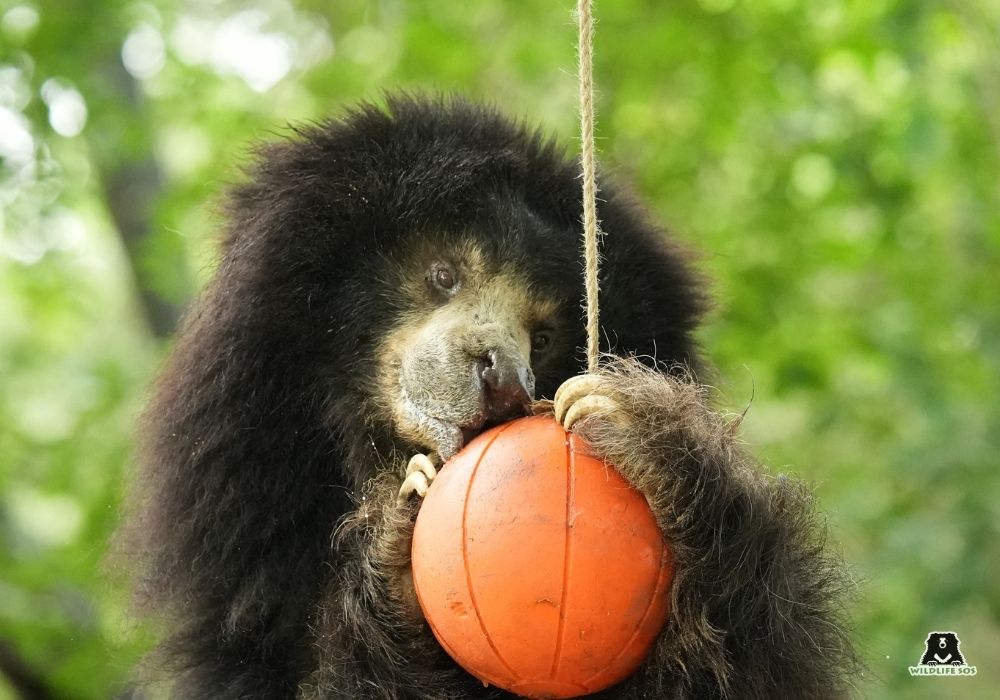
Medical Care
Behind every senior bear at Wildlife SOS is a highly structured healthcare plan. Geriatric bears receive quarterly specific medications and supplements, including multivitamins and joint-support formulations, to maintain mobility and overall well-being. Routine veterinary check-ups involve haematological, biochemical, and faecal analyses, careful monitoring of feed intake, gait assessments, body weight tracking, and oral cavity examinations to catch problems early. Dental X-rays are also performed when needed, and calcium supplementation is adjusted monthly depending on the animal’s condition, with particular issues like chronic arthritis or digestive disorders being addressed on a case-by-case basis.
Every bear’s medical plan is customised according to their needs. Leena, who is a female sloth bear of 25 years at ABRF, for instance, presented digestive disorders that made her feeding difficult. With intensive care and tailored therapeutic interventions, she regained her appetite and energy. This kind of individual attention ensures that no bear is treated as just another patient; each is a personality, with their own history and needs.
Bobby, another senior, residing in BBRC, is currently 32 years old and came to our centre in poor shape. Bobby was underweight and had dental problems, and was cautious of people, a result of years of physical and emotional wounds caused by being a ‘dancing’ bear. Over time, with patient handling, dietary adjustments and specialised veterinary care, he began showing signs of trust and curiosity, even developing a fondness for enrichment treats like smeared peanut butter on logs. As he grew older, Bobby began to show signs of stiffness in his joints. But a revised supplementation schedule combined with enrichments suitably modified for him allows him to stay active well into his thirties.
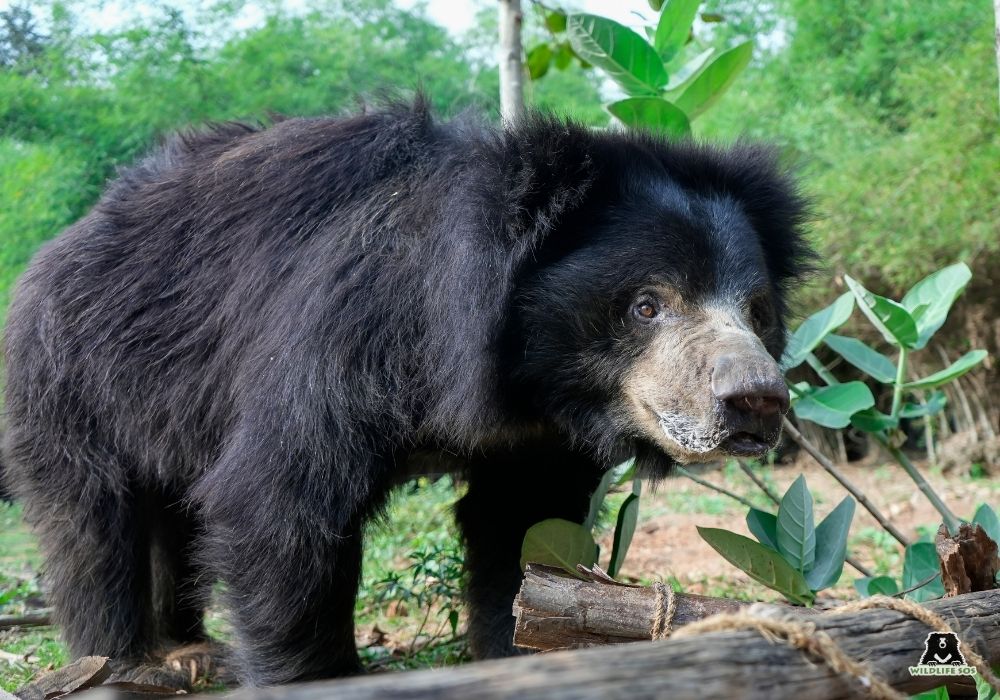
Food & Nutrition
Food is just as important to geriatric care as medicine. Because elderly bears frequently have digestive sensitivity, caregivers modify the flavours, textures, and portion sizes to promote eating. To improve palatability and soften the food, milk is frequently added, and instead of a millet-based porridge, rice gruel is used as a soft and smooth alternative for bears that become reluctant to eat. For their digestion and immunity, seasonal fruits are mashed or offered as juices, and carefully selected supplements are added.
When Chameli, a 34-year-old female under our care at the Agra facility, was rescued, she was in a deplorable condition. She had a deep nasal wound, a rough, dry coat, and both canines and incisors were missing. Chameli had to be kept in isolation because of her aggravated suspicion of people. Her caregivers would say that she would hide in corners at the sight of a human. However, with the passage of time, and a lot of gentleness, care and treatment made miracles happen. Chameli started responding to the voices of her caregivers, displaying recognition of her caregivers as she gradually gained trust in them. But with increasing age, she started suffering from a lack of appetite. To pique her interest, her caregivers used honey and peanut butter in her meals, added milk to make it easy to eat, and offered smaller, more frequent portions of this to her. Her intake considerably increased as a result of the adjustment.
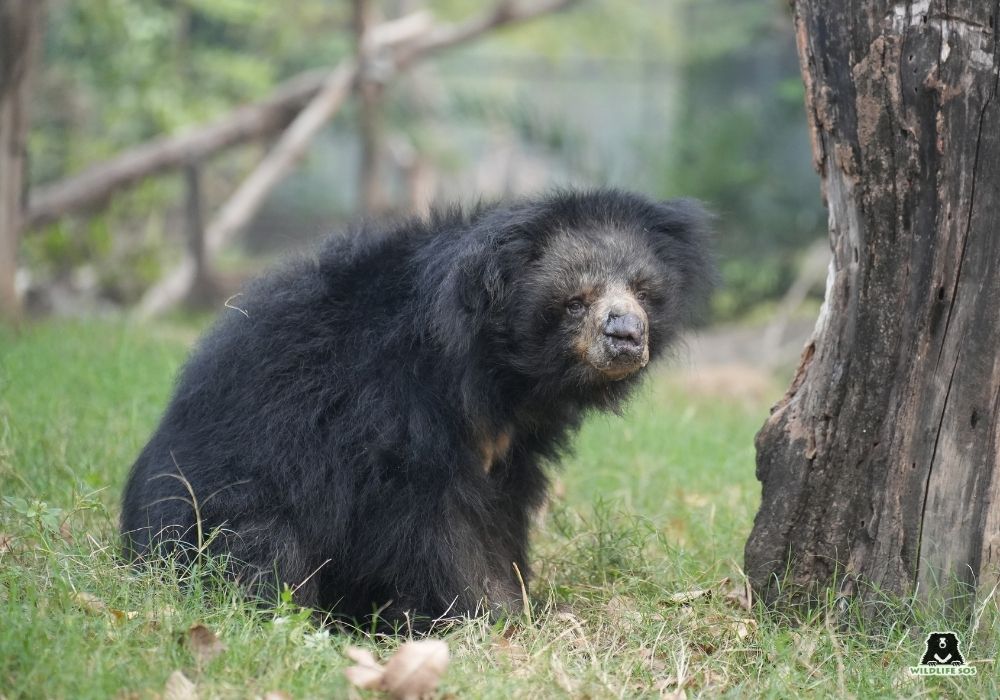
Another senior bear, Jalebi, now 25 years old and residing at ABRF, had always refused ragi (finger millet) porridge. However, when wheat porridge was introduced as an alternative, she took to it enthusiastically, and her overall feed intake improved. These attentive changes, which are based on empathy and observation, truly have a profound impact. For elderly bears who are unable to handle food that would strain their digestive system, caregivers also make sooji (semolina) or ragi (finger millet) versions of the porridge. During winters, a warm protein-rich broth is a standard item on the menu for senior bears, a simple but effective way to keep them warm and nourished. Herbal remedies like Ayurvedic capsules, known for their immune-boosting properties, are also administered.
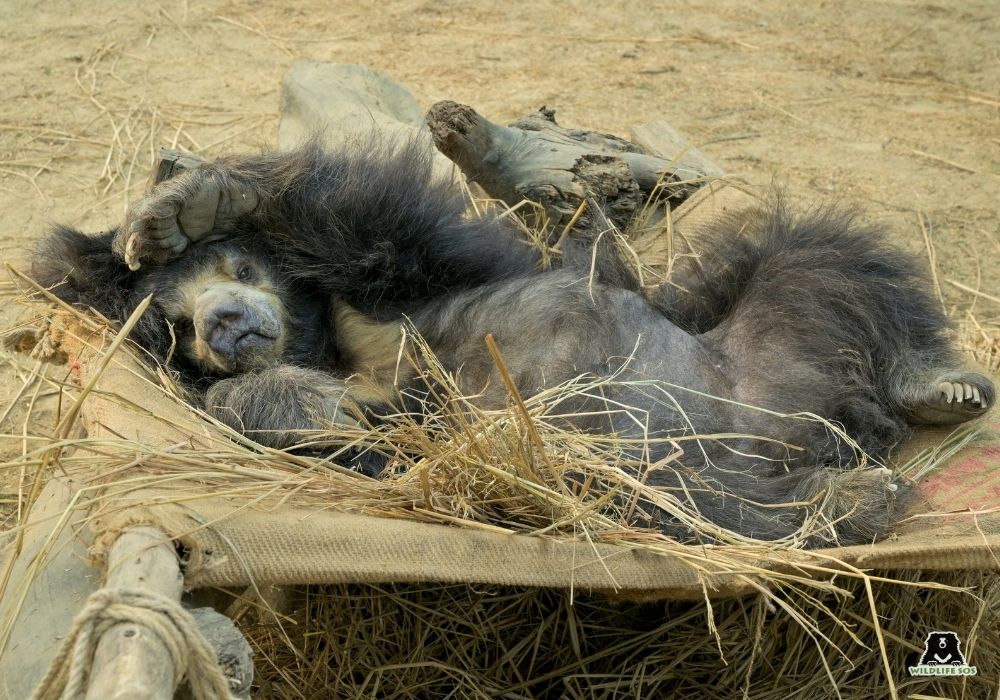
Enrichment & Comfort
Elderly bears favour a slower pace, while younger bears spend hours scaling structures or digging pits. Enrichment activities are therefore modified to accommodate every bear’s energy and physical conditions. While olfactory-based enrichments, such as scent trails or hidden treats, offer mental stimulation without putting strain on the body, low-level structures lessen the need for strenuous climbing. For slow foraging, caregivers spread dates in the field or spread peanut butter on logs. In certain situations, such as Bobby’s, stairs have been constructed to enable them to safely access their hammocks.
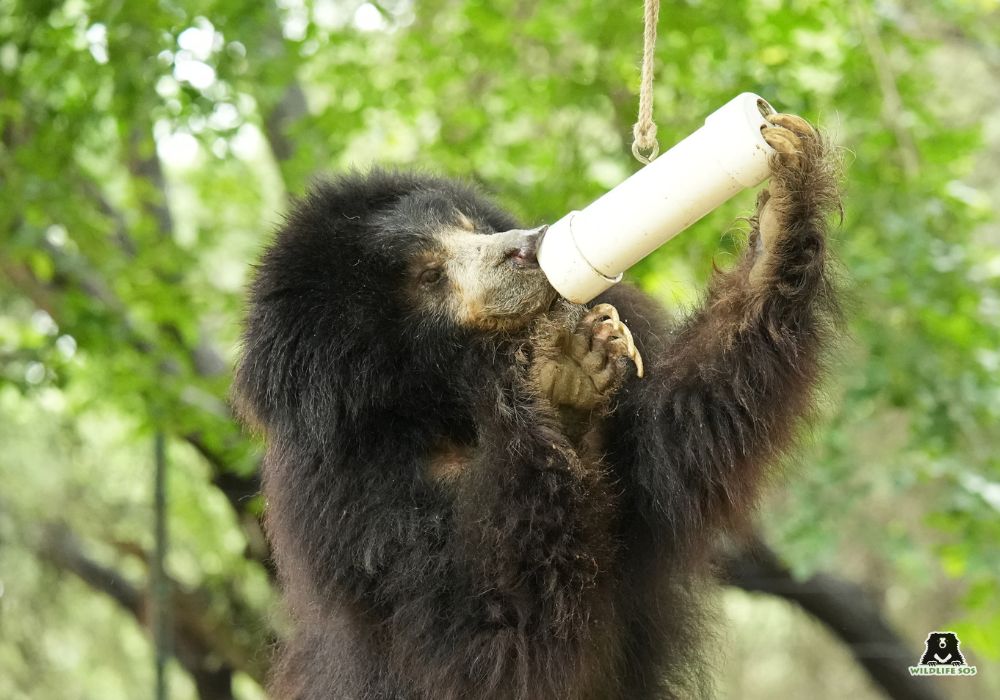
Soft substrates ease pressure on arthritic joints, and hammocks offer a comfortable resting place. Elderly sloth bears at the centre often require small adjustments, such as lowering hammocks or modifying enrichment routines, to ensure they remain comfortable and engaged even in their senior years. During winters, their dens are equipped with halogen lights and lined with hay to keep them warm, while additional hay is spread across their outdoor resting pits and platforms. Every such adaptation ensures comfort through every season, allowing our senior bears to rest, heal, and thrive.
A Future Worth Fighting For
At Wildlife SOS, caring for elderly sloth bears blends gentle routines with innovation and empathy: mornings begin with health checks and meals tailored to each bear, followed by rest in shaded hammocks or slow foraging for insects; enrichments are redesigned to keep minds engaged, and evenings bring easily digestible porridge and fruit. Positive conditioning allows stress-free medical care, while lowered hammocks, soft substrates, altered diets and herbal supplements — refinements born from years of attentive observation — help ease age-related challenges for sloth bears. Thanks to support from partners like International Animal Rescue, bears such as Jalebi, Bobby, Leena, Chameli, and many more now spend their golden years free from pain and fear, forming special bonds with caregivers and living a life of dignity once denied to them.
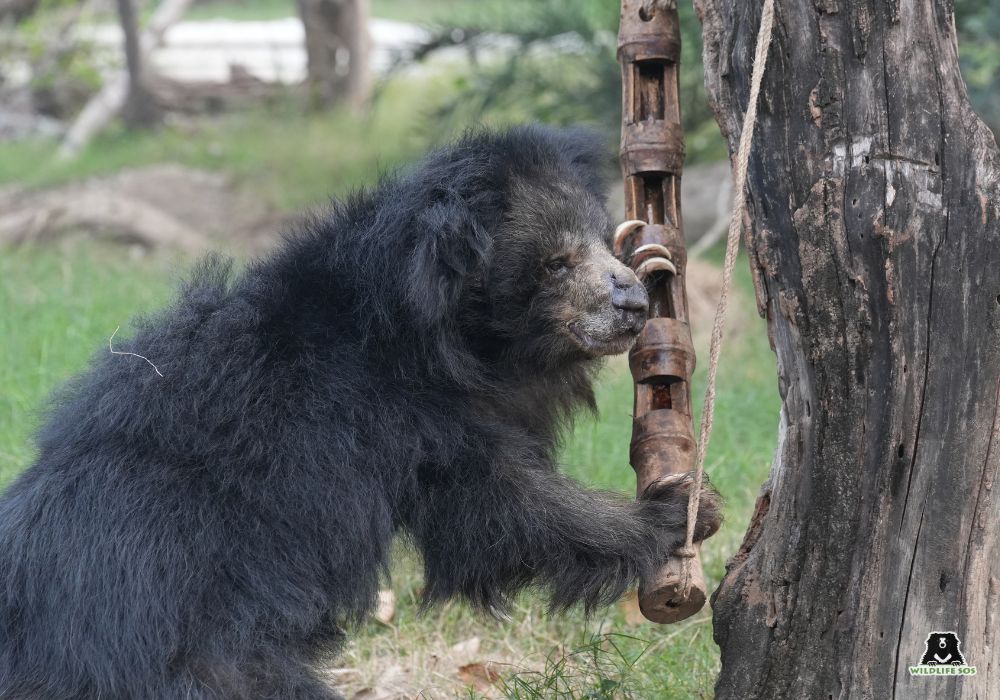
Wildlife SOS’s geriatric care does more than just prolong life expectancy; it allows the sloth bears to feel safe and lead their days in their own way, surrounded by caring individuals. And as these sloth bears grow old within an environment replete with trees instead of streets, their stories remind us that healing is possible even after decades of pain and that by caring for the most vulnerable among them, we reaffirm our own humanity.
You too can join our mission to continue providing medical care and sustain the welfare of sloth bears rescued from distress by making a donation to Wildlife SOS.
Feature image: Mradul Pathak/ Wildlife SOS

